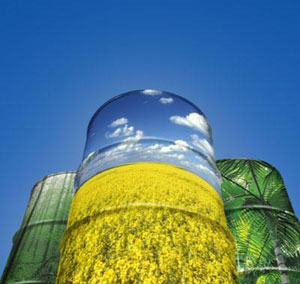Diesel fuel that is made up of a mixture with animal fat or vegetable oil is called biodiesel. This is a more environmentally conscious way to fuel machinery, trains and vehicles and is produced by the chemical reaction of the vegetable oil or animal fat with an alcohol. There are many uses for this new fuel, and can also be used as heating oil if you are looking for a low carbon version. It can also come on one hundred percent pure form, known as B100 or it can be mixed with petrodiesel. This option is often times used in gas stations for daily vehicle use, and may typically be cheaper then your normal gas choice, depending on your location.
Biodiesel can possibly eat away at gaskets and other natural rubber parts in vehicles made prior to 1992, and may cause clogged fuel filters so if you switch to one of these new blends of gasoline, it is advised you change your fuel filters also. This new found fuel is used worldwide and is becoming increasingly popular, especially for cities with mass transit options such as subways, train railways and aircraft. In 2007, McDonald’s even claimed they would start making this fuel out of the waste oil from their restaurants! This fuel that they have made themselves is now what fires up their fleet of delivery trucks, etc.
Also in 2007, Virgin Trains of Britain ran it’s first train fueled by one hundred percent biodiesel, in which The Prince of Wales participated as one of the first passengers. To this day they still continue to run and successfully operate this train, and yes, it still fuels itself with one hundred B100. Shortly after this epic journey, Disneyland began running all of their trains on their own manufactured and re-used cooking oils. This makes you feel good about their sometimes pricey hotels and restaurants, because you are supporting a company that cares for our earth!
This amazing, environmentally safe fuel has reached a production rate of almost four million tons per year, and about eighty five percent of that came from Europe! Some of the prices are obviously more expensive then others…depending on the area of the world you are in. In 2007, biodiesel was about twelve cents cheaper in the United States then the other offered gas blends. In today’s market, with the rise in diesel prices, this fuel may be up to fifteen cents higher then it’s competitors but it is certainly worth the higher price tag. Not only will this fuel make you a more environmentally savvy citizen, but it will allow you to make those extra road trips with out feeling guilty about the pollution you are causing.
Alexander Sutton enjoys the entire consumer experience from top to bottom and enjoys the opportunity to help others protect themselves from scams while uncovering budget-friendly solutions across a variety of industries. For more information, please visit Biodiesel.




